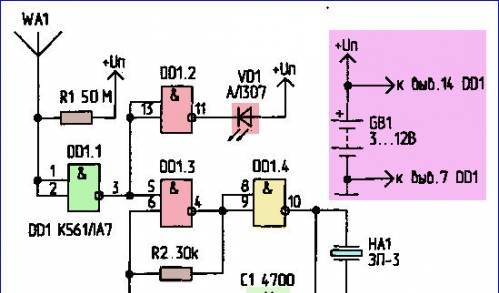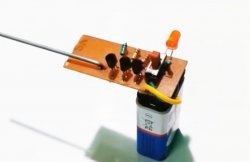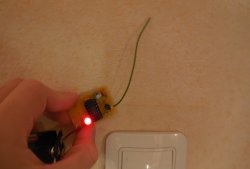Hidden wiring detector
One of the simplest devices is a hidden wiring detector, presented below.
Resistor R 1 is needed to protect the K561LA7 microcircuit from increased voltage of static electricity, but, as practice has shown, it does not need to be installed.
The antenna is a piece of ordinary copper wire of any thickness. The main thing is that it does not bend under its own weight, i.e. was quite tough.
The length of the antenna determines the sensitivity of the device. The most optimal value is 5...15 cm. When the antenna approaches the electrical wiring, the detector emits a characteristic crackling sound.
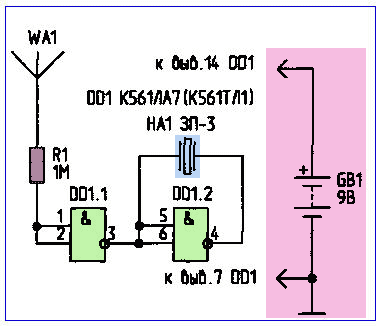
This device is very convenient for determining the location of a burnt-out lamp in a Christmas tree garland - the cracking stops near it.
The ZP-3 type piezo emitter is connected in a bridge circuit, which provides increased “crackling” volume. Figure 2 shows a more complex detector, which has, in addition to sound. also a light indication. The resistance of resistor R1 must be at least 50 MOhm.
In a chain LED There is no current-limiting resistor VD1. since the DD1 chip (K561LA7) copes well with this function itself.
If the input currents of element D 1.1 allow, then by removing resistor R1 from the circuit shown in Fig. 2, we get a device that responds to changes in the static potential in the surrounding space.
To do this, the WA1 antenna is made 50...100 cm long using any wire. Now the device will respond to the movement of the human body.
By putting such a device in a bag, we get an autonomous security device that emits light and sound signals if any manipulation occurs with or near the bag.
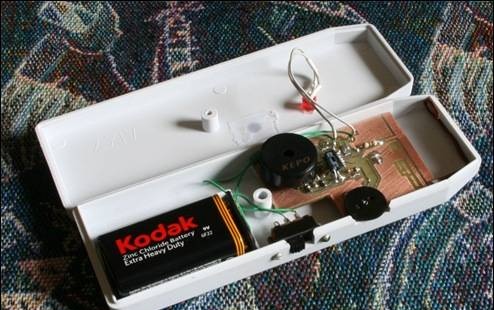
Similar master classes
Particularly interesting

Cable antenna for digital TV in 5 minutes

A selection of simple and effective schemes.

Three-phase voltage from single-phase in 5 minutes
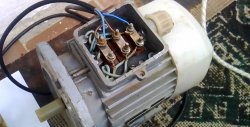
Starting a three-phase motor from a single-phase network without a capacitor

Eternal flashlight without batteries
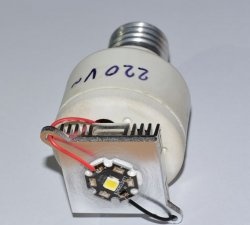
How to make an inexpensive but very powerful LED lamp
Comments (3)

